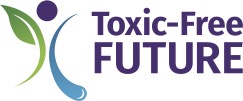EPA Announces “Hazardous Substance” Designation for Two PFAS Chemicals

Toxic-Free Future applauds the move and urges continued action to end the use of PFAS
Perfluorooctanoic acid (PFOA) and perfluorooctane sulfonic acid (PFOS) are two of the most common PFAS. PFAS (per- and polyfluoroalkyl substances) are a class of thousands of chemicals known as “forever chemicals” because they are not known to break down in the environment and can easily move through soil to drinking water.
In July 2022, Toxic-Free Future joined more than 80 groups in a letter urging the Biden administration to move swiftly to designate PFOA and PFOS as hazardous substances under CERCLA.
In response to this news, Toxic-Free Future released the following statement:
“We applaud EPA’s action to address the PFAS crisis plaguing communities across the country. It is an important first step that will hold polluters accountable and start cleaning up contaminated sites,” said Liz Hitchcock, director of Safer Chemicals Healthy Families, the federal policy program of Toxic-Free Future. “Communities are paying for this pollution with our health and our tax dollars. We need continued action — to declare the full class of PFAS hazardous and to prevent further pollution by ending use of all PFAS chemicals in common products like food packaging and firefighting gear.”
PFAS BACKGROUND
Chemical companies sell PFAS (per- and polyfluoroalkyl substances) for application to paper and textiles as stain-resistant, water-repellent, and grease-proofing treatments. A growing body of scientific research has found links between exposures to PFAS and a wide range of health problems including a weaker immune system, decreased vaccine response, cancer, increased cholesterol levels, pregnancy-induced hypertension, liver damage, reduced fertility, and increased risk of thyroid disease. PFAS are often referred to as “forever chemicals” because they are not known to break down in the environment and can easily move through soil to drinking water. With remarkable persistence and mobility, PFAS have become global pollutants that threaten the health of people and wildlife.
Toxic-Free Future research has uncovered PFAS pollution in people and products. In a peer-reviewed study, scientists at Toxic-Free Future (TFF), the University of Washington, and Indiana University found PFAS in 100% of breast milk samples tested and that newer PFAS build up in people. Original studies by Toxic-Free Future found PFAS in most products labeled stain- and water-resistant as well as the likely presence of PFAS in food packaging at major fast-food chains and at top grocery store chains. Toxic-Free Future’s 2021 investigative report revealed that a PFAS manufacturing facility is a major source of both PFAS pollution and ozone-depleting chemicals that contribute to health problems and climate change.
State governments are taking legislative and regulatory actions to phase out PFAS in products to prevent contamination in favor of safer alternatives. For example, laws in ME and WA have given state agencies authority to ban PFAS in a wide range of products. Eleven states (CA, CO, CT, HI, MD, ME, MN, NY, RI, VT, and WA) have enacted state bans on PFAS in food packaging. Five states including CA, CO, ME, MD, and VT have adopted restrictions on PFAS in carpets, rugs, and aftermarket treatments and regulatory action is pending on these products and other home textiles (e.g. upholstery, bedding) in CA and WA. CO adopted restrictions on indoor and outdoor furniture as well as oil and gas products. Eleven states including CA, CO, CT, HI, IL, ME, MD, NH, NY, VT, and WA have put in place bans on the sale of firefighting foam containing PFAS.
Retailers are increasingly adopting safer chemicals policies to reduce or eliminate PFAS in key product sectors including textiles, according to the annual Retailer Report Card published by Toxic-Free Future’s Mind the Store program. In response to Toxic-Free Future’s Mind the Store program, 22 retailers selling food or food packaging have announced steps to reduce or eliminate PFAS in food packaging at more than 140,000 stores worldwide including Burger King, McDonald’s, Starbucks, Whole Foods Market, and other major retailers.
Toxic-Free Future is a national leader in environmental health research and advocacy. Through the power of science, education, and activism, Toxic-Free Future drives strong laws and corporate responsibility that protects the health of all people and the planet.
Stephanie Stohler
Toxic-Free Future
sstohler@toxicfreefuture.org
Visit us on social media:
Facebook
Twitter
LinkedIn
Legal Disclaimer:
EIN Presswire provides this news content "as is" without warranty of any kind. We do not accept any responsibility or liability for the accuracy, content, images, videos, licenses, completeness, legality, or reliability of the information contained in this article. If you have any complaints or copyright issues related to this article, kindly contact the author above.
